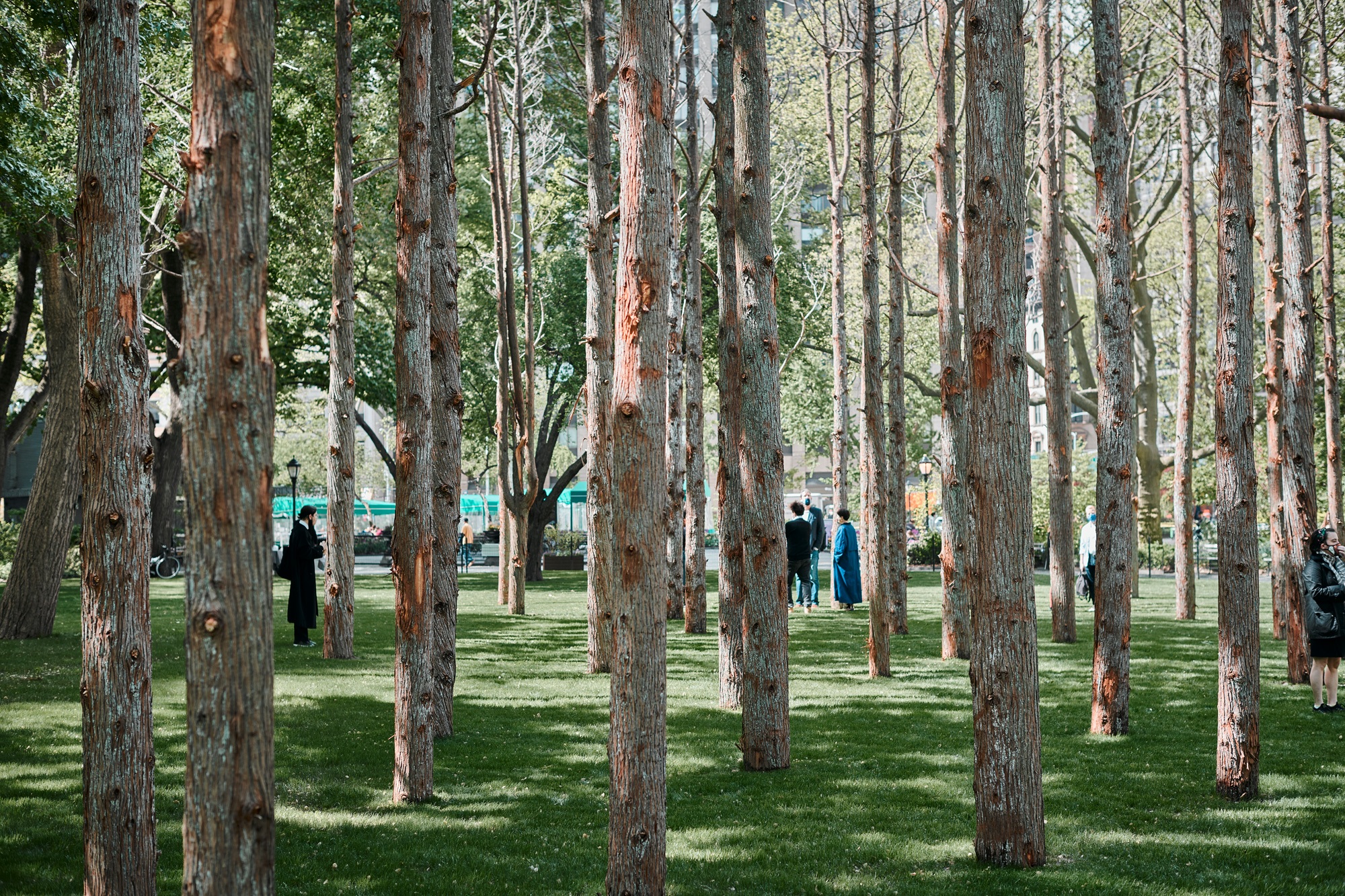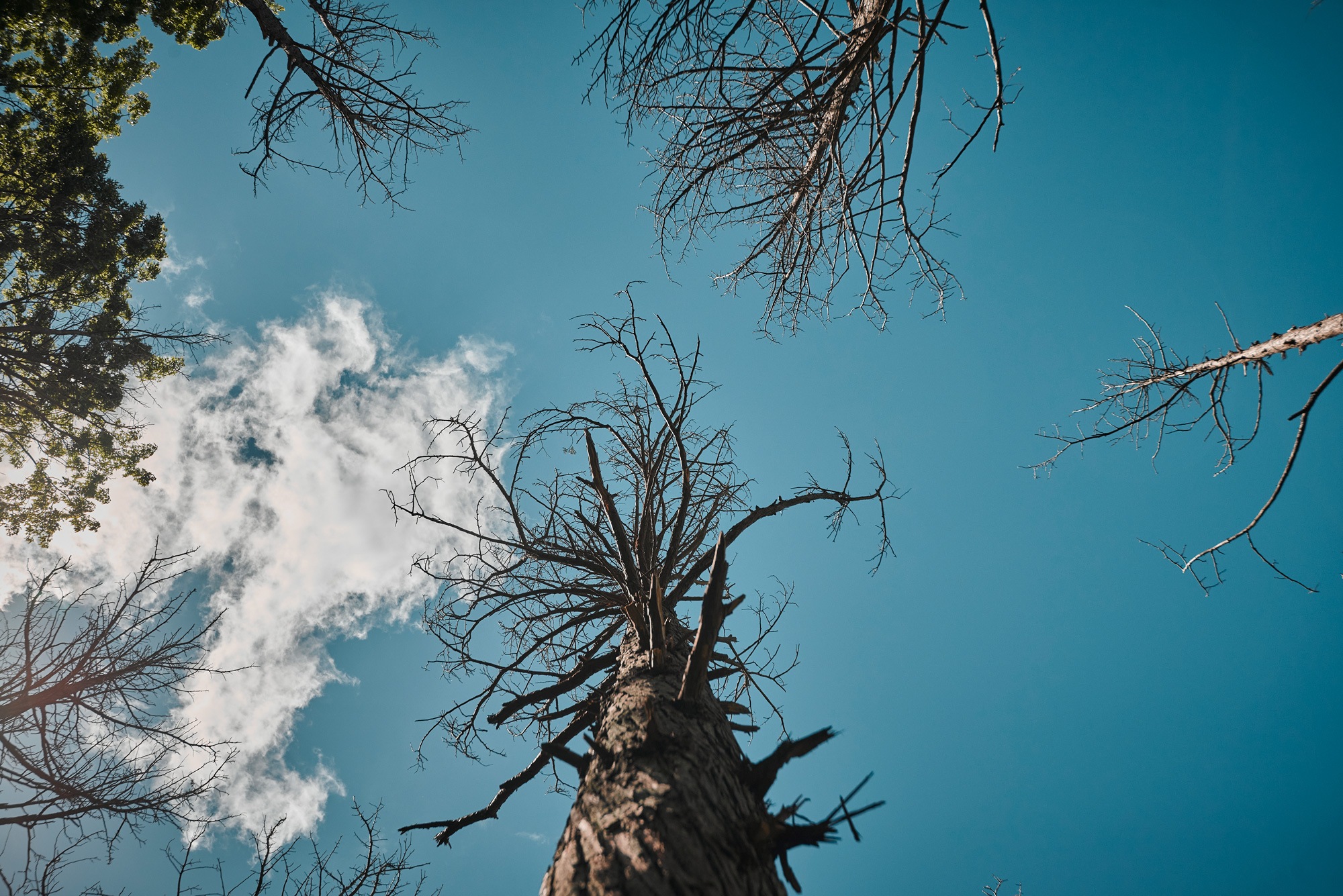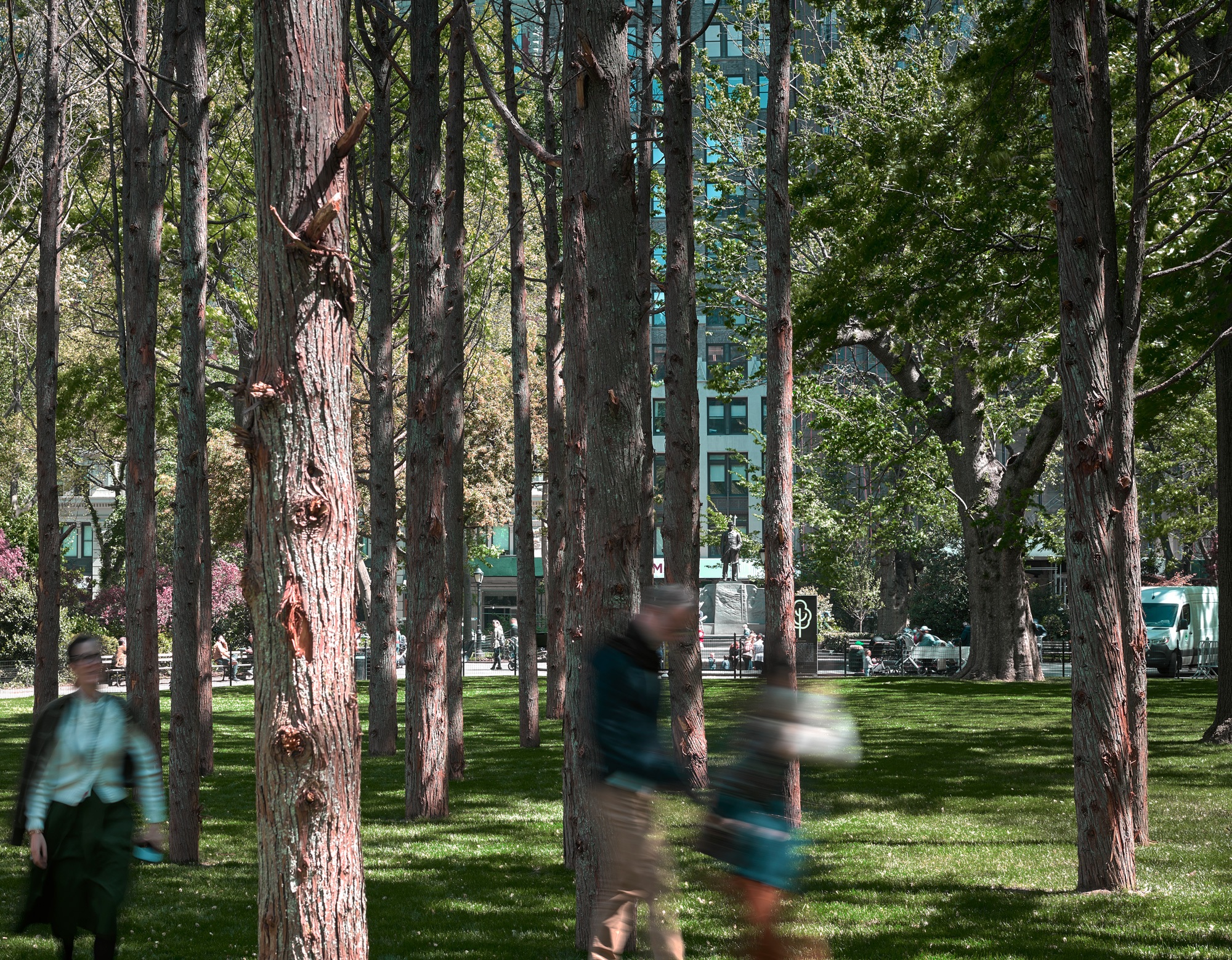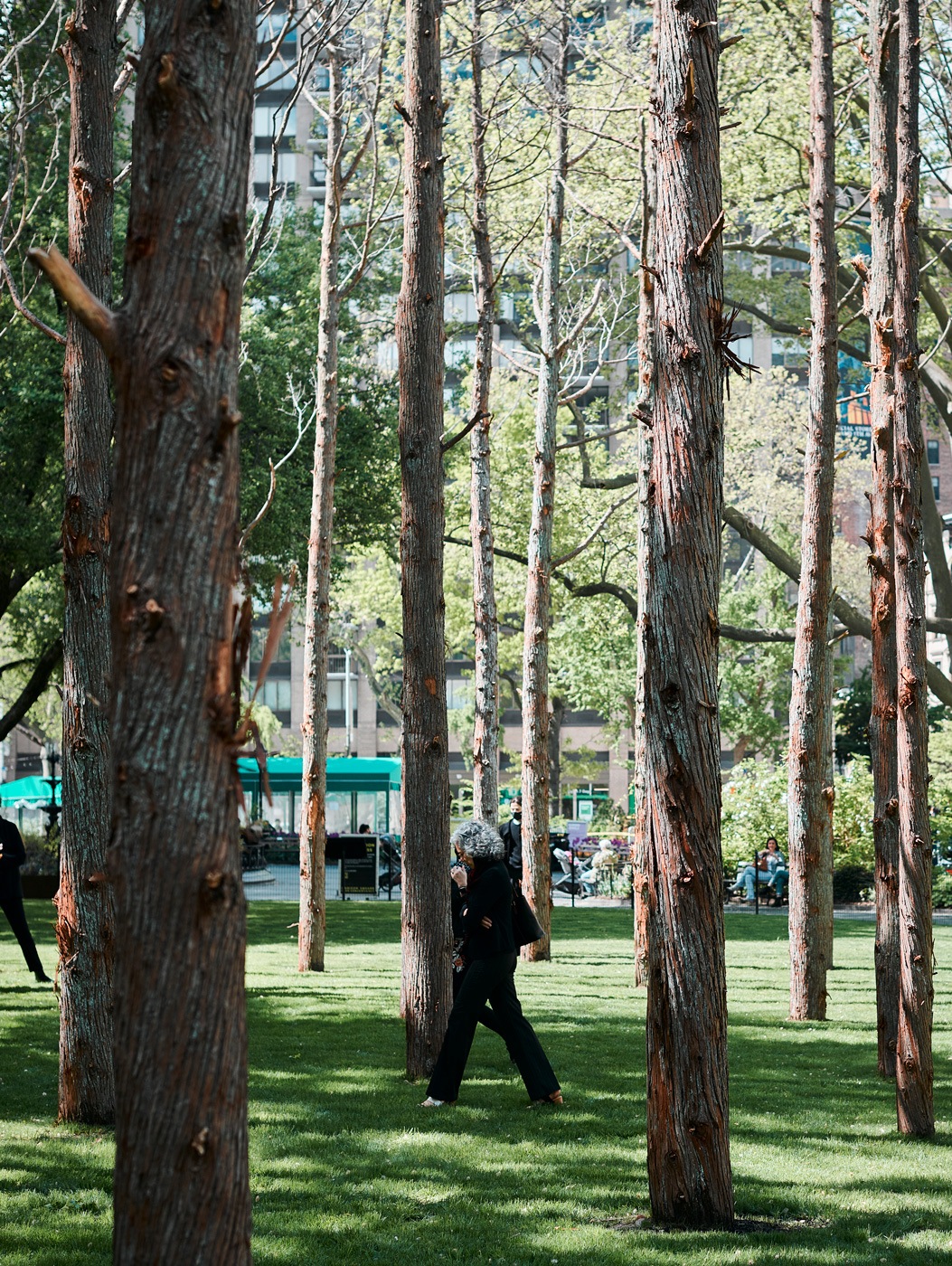This site uses cookies – Learn more.
Maya Lin: Ghost Forest
Maya Lin: Ghost Forest
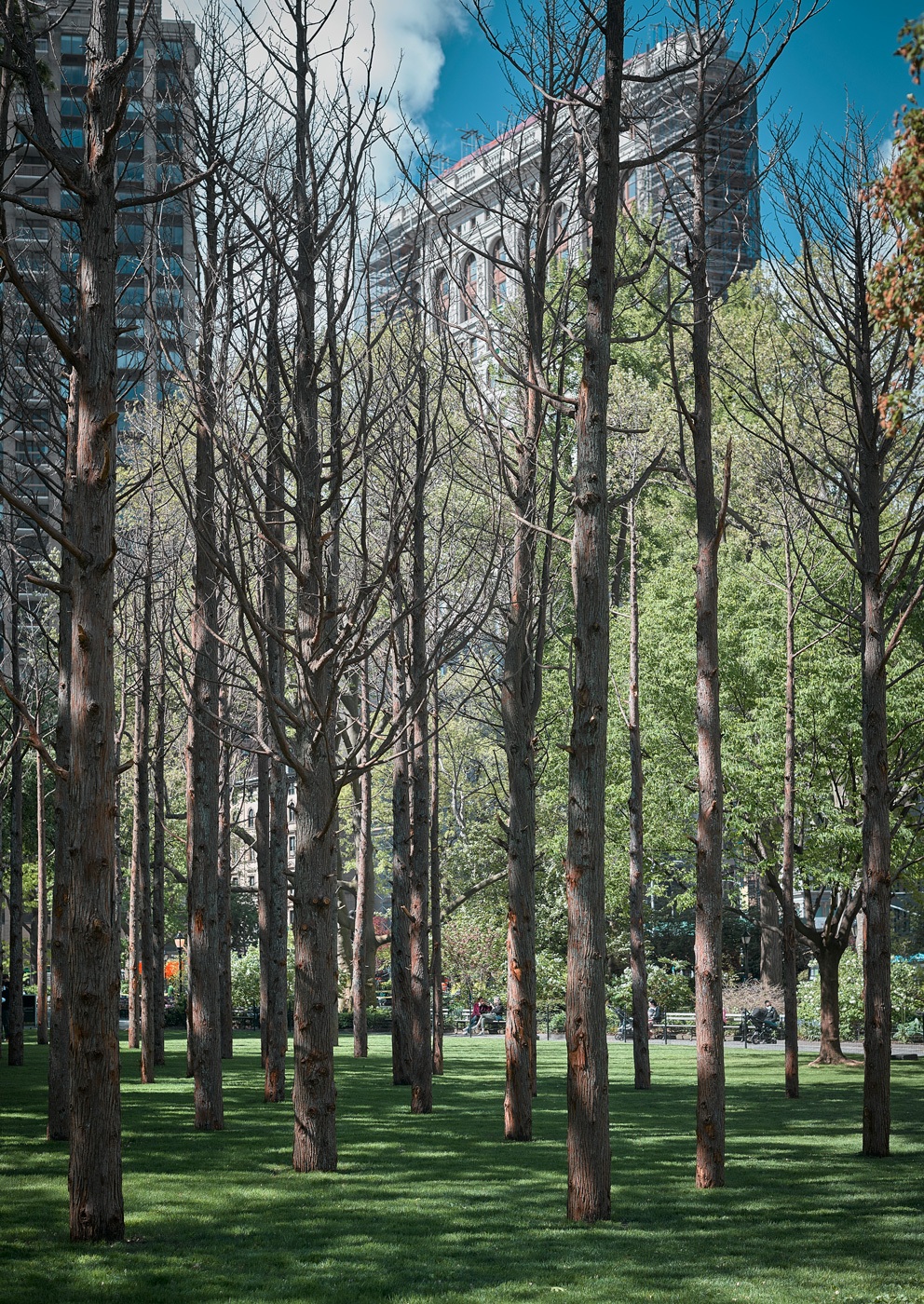
Maya Lin’s Ghost Forest, a towering stand of forty-nine haunting Atlantic white cedar trees, is a newly-commissioned public art work. Lin brings her vision as an artist and her agency as an environmental activist to this project, a memory of germination, vegetation, and abundance and a harsh symbol of the devastation of climate change. The height of each tree, around forty feet, overwhelms human scale and stands as a metaphor of the outsized impact of a looming environmental calamity.
In nature, a ghost forest is the evidence of a dead woodland that was once vibrant. Atlantic white cedar populations on the East Coast are endangered by past logging practices and threats from climate change, including extreme weather events that yield salt water intrusion, wind events, and fire. The trees in Ghost Forest were all slated to be cleared as part of regeneration efforts in the fragile ecosystem of the Pine Barrens of New Jersey.
The magnitude of planetary vulnerability is a significant subject in Lin’s practice through sculpture, installation, and her web-based resource, What Is Missing?. Now two generations removed from the Earthwork artists of the 1960s and 1970s, Lin is taking on rural and urban outdoor space with a focus on geology and the fragility of the earth’s ecosystem.
Lin created Ghost Forest Soundscape highlighting the sounds of some of the native species of animals once common to Manhattan. To listen, click the audio button to the left or view the accompanying text and credits here. It draws from the Macaulay Library sound archive of the Cornell Lab of Ornithology. A series of public programs focused on nature-based solutions to climate change, including planting 1,000 trees and shrubs in collaboration with Natural Areas Conservancy, are planned throughout the run of the exhibition.




